
Question and Answers Forum
Question Number 92804 by niroj last updated on 09/May/20
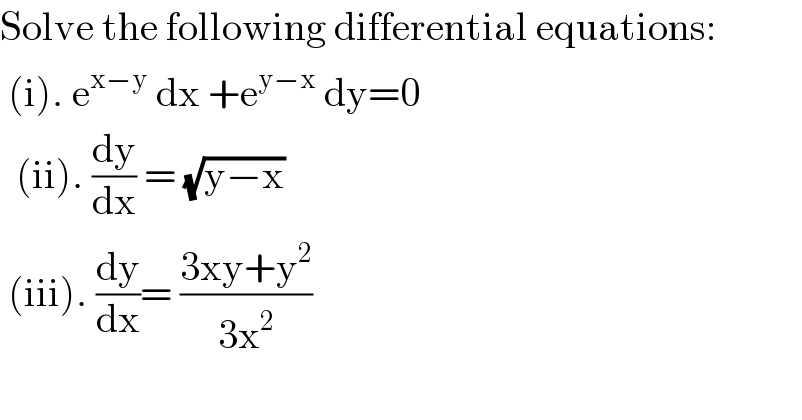
Commented by john santu last updated on 09/May/20
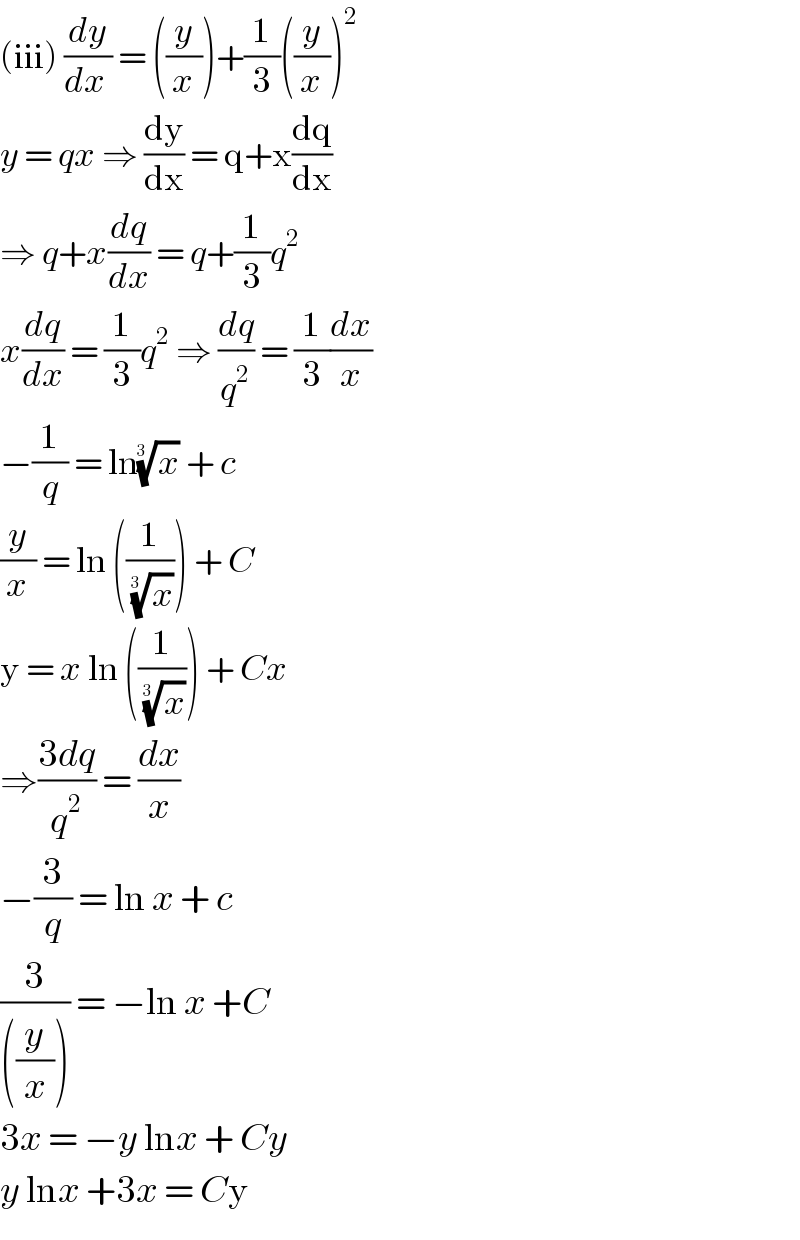
Commented by niroj last updated on 09/May/20
I really thanks full your efforts mr.john santu�� it may be result should better: 3x + y log x = cy .��
Commented by john santu last updated on 09/May/20

Commented by mr W last updated on 09/May/20
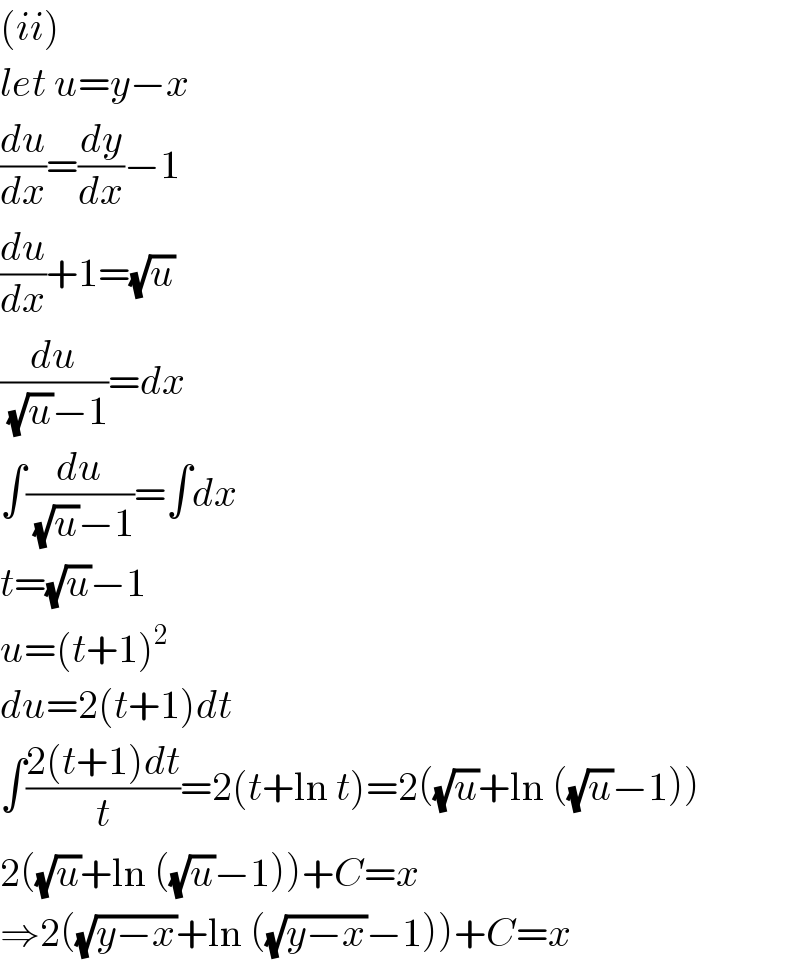
Commented by niroj last updated on 09/May/20
Nice solution dear����
Commented by john santu last updated on 09/May/20
differential equation is exactly the same as integral, the answer can be more than 1 form
Commented by john santu last updated on 09/May/20
and no measure states that one form is better than another. because there must be differences in viewpoints. hair can be the same black but the contents of the head are different. ha ha ha..
Commented by niroj last updated on 09/May/20

Commented by john santu last updated on 09/May/20
cooll man ����
Commented by john santu last updated on 09/May/20
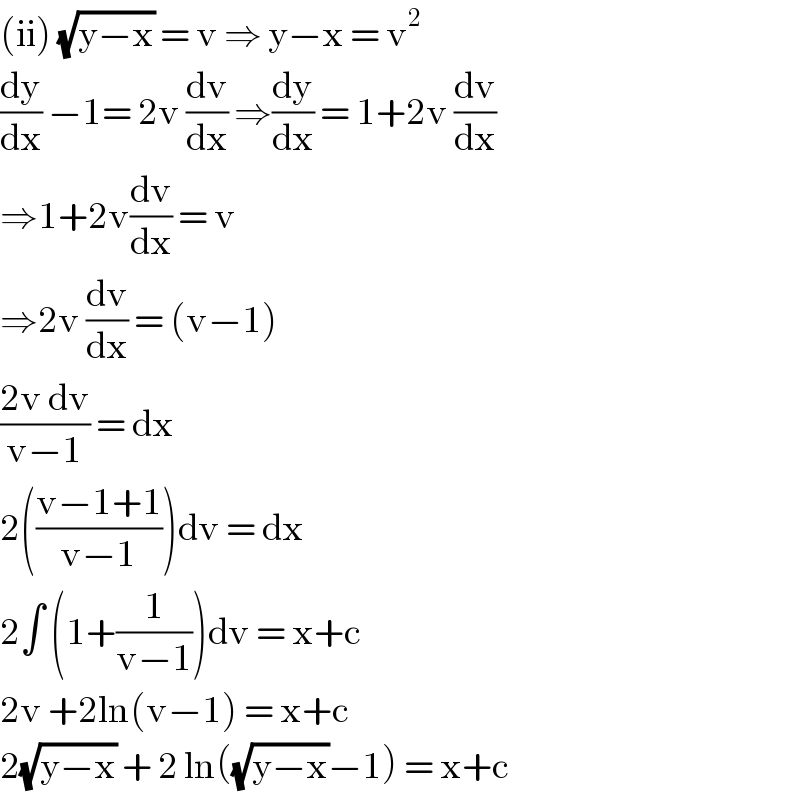
Commented by niroj last updated on 09/May/20
Now mission is complete Mr.John Santu while I aspect thank for your pleasure time����������
Commented by peter frank last updated on 09/May/20

Answered by mr W last updated on 09/May/20
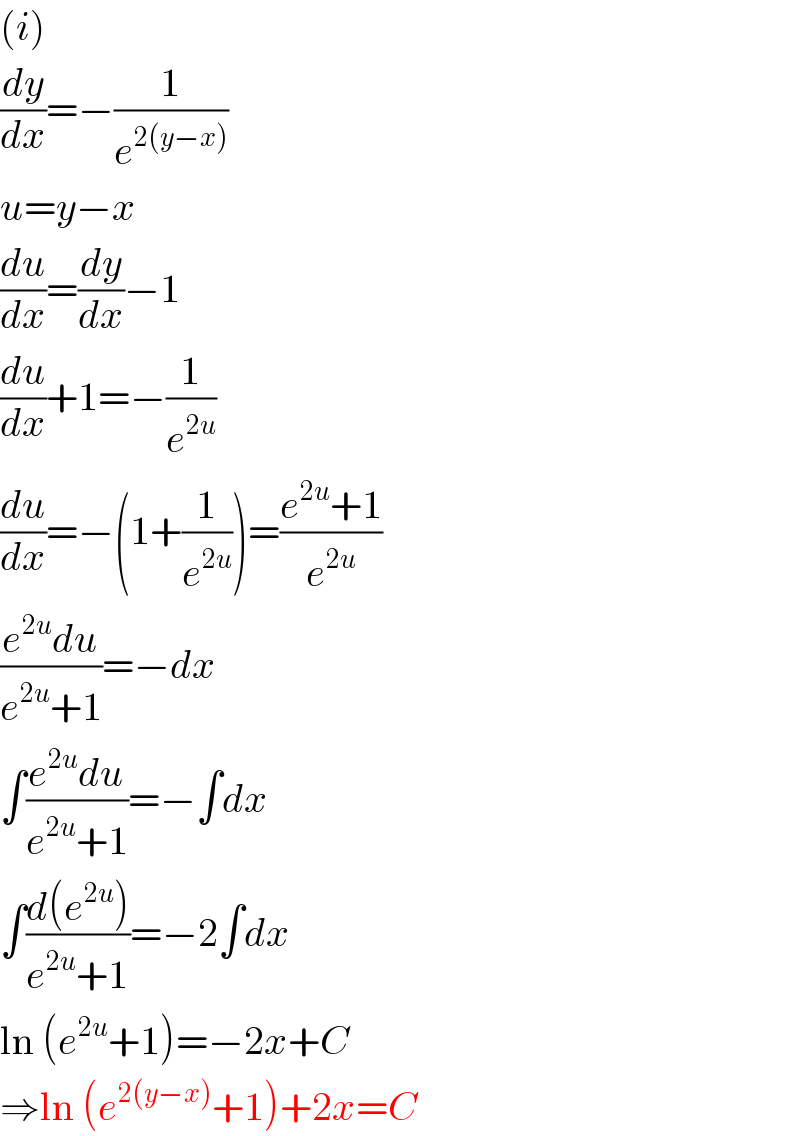
Commented by john santu last updated on 09/May/20

Commented by niroj last updated on 09/May/20

Commented by otchereabdullai@gmail.com last updated on 09/May/20

